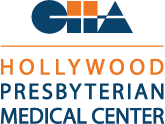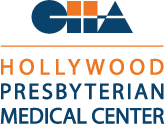|
In previous blogs, we discussed glaucoma surgery done by directing a laser beam of light through the front of the eye to treat open-angle and closed-angle glaucoma. Endoscopic glaucoma surgery allows surgeons to work from inside the eye to more precisely aim and power the laser beam. You may have heard of endoscopic surgery to repair knees or for a colonoscopy to check for colon cancer. These procedures are done through an endoscope, a tube inserted into the body that allows surgeons to see inside to do examinations and operations. For glaucoma laser surgery, the tube is tiny enough to use through a small cut in the surface of the eye. Inside the endoscope are a light, camera, and the laser tip. The glaucoma treatment surgery most commonly done through the endoscope is called endoscopic cyclophotocoagulation (sigh-clo-pho-to-co-ag-you-lay-shun) or ECP. The laser is used to target the cells in the eye that make eye fluids. After treatment, the cells produce less fluid and that lowers the inner-eye pressure. What to Expect During ECPECP does not require a hospital stay and can be done at any glaucoma clinic that has an ECP glaucoma expert and required laser. Most often, ECP is done at a Glaucoma Center of Excellence. After the procedure, be sure to have someone drive you home. First, you are given “twilight anesthesia,” a dose of medicine through an IV, a needle inserted in your hand. It helps you relax and be comfortable during the procedure. Eyedrops are placed in the eye to numb it. Then the glaucoma surgeon makes a small cut in the white of your eye and places the endoscope through the opening. The laser is aimed from inside the eye at fluid-producing cells. Finally, the laser beam is used at the exact places and power to stop the right number of cells from producing fluid. Most people feel little or no pain when the laser is used. Some say it feels like a pinprick. Afterwards, your eye may feel sore or dry, and your vision may be blurry. Your doctor will put in eyedrops that lower pain and help healing. Follow the doctor’s instructions for wearing a plastic shield over your eye, using eye drops, and protecting your eye as it heals. Take it easy for next several days, and then you can return to normal activity. It may take a week or more for you to see clearly. Your glaucoma surgeon will schedule follow up appointments to be sure the eye is healing well, and your eye pressure is going down. Be sure keep the appointments because glaucoma management through medication and procedures is the only way to prevent more damage and save your eyesight. In our next blog, we’ll discuss another common type of glaucoma surgery called a trabeculectomy. (Tra-BEK-yoo-lek-toe-me.) The goal of this series of weekly blogs is to help you feel informed and confident, wherever you are in learning about glaucoma. Visit sceyes.org/blog weekly to learn more. Please provide feedback, suggested topics, or questions about glaucoma in the Contact Us section below. Thank you. |
 ENGLISH
ENGLISH  РУССКИЙ
РУССКИЙ 


